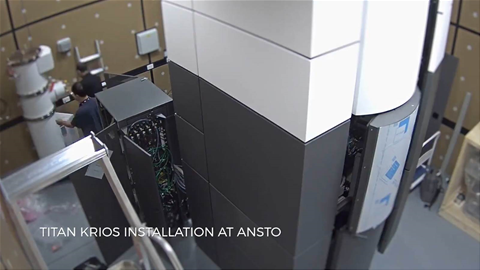
How Wollongong Uni beefed its tech to handle new 1t, 10GB/s microscopes
That's microscope, not telescope: Benchmark Awards 2020 finalist.
by Matt JohnstonThe two new microscopes at the University of Wollongong’s Molecular Horizons Research Facility are so groundbreaking not even the manufacturers were sure what technical specifications the facility needed to host them.
Fiona Rankin, director of information management and technology services at the university, told iTnews it was very much a collaborative experience with researchers, industry partners, and high performance computing centres to build the facility’s capabilities.
Two of the most powerful microscopes currently in Australia, the Titan Krios Cryogenic Electron Microscopy (Cryo-EM) - standing at three metres tall and weighing as much as a small car - require a 10GB/s connection to storage and processing equipment to enable data-mining and machine learning across massive datasets for health analytics and molecular visualisation.
Due to the high level of security and flexibility required the only option was deployment of a software defined networking model. The deployment of this technology, a first for the University, allows the programming of the network and provides classification of traffic at a policy level to ensure data is delivered efficiently, securely and at the speed required,
A hybrid approach allows near-real time analysis through onsite HPC, while the ‘heavy lifting’ is done remotely at Monash University’s MASSIVE facility using the AARNet high speed network.
However, due to the sensitivity of the microscopes, the on-campus computing facilities needed to be located separately to reduce vibrations - even though the microscopes were already mounted on a base that rests in a concrete basin filled with a swimming pool of sand to shield it from vibrations.
“It’s definitely one of the bigger and more interesting projects I’ve worked on in my career,” Rankin said of the $80 million facility.
One of the key research fields the facility is being used for is the study and eventually prevention of antimicrobial resistance - an issue predicted to cause upwards of 10 million deaths a year and US$100 trillion in lost productivity if left unchecked.
The Molecular Horizons Research Facility is also a drawcard for the university, providing the foundation for cross-institutional and multinational collaboration efforts in health sciences.
UOW has already used the facility to strengthen partnerships with NetApp, Katana1, Monash Research Facility (MASSIVE), Oracle, Google and Australia's Nuclear Science and Technology Organisation (ANSTO), where the Cryo-EM was temporarily set up while the UOW built the facility.
This project is a finalist in the Emerging Technology category of the iTnews Benchmark Awards 2020.